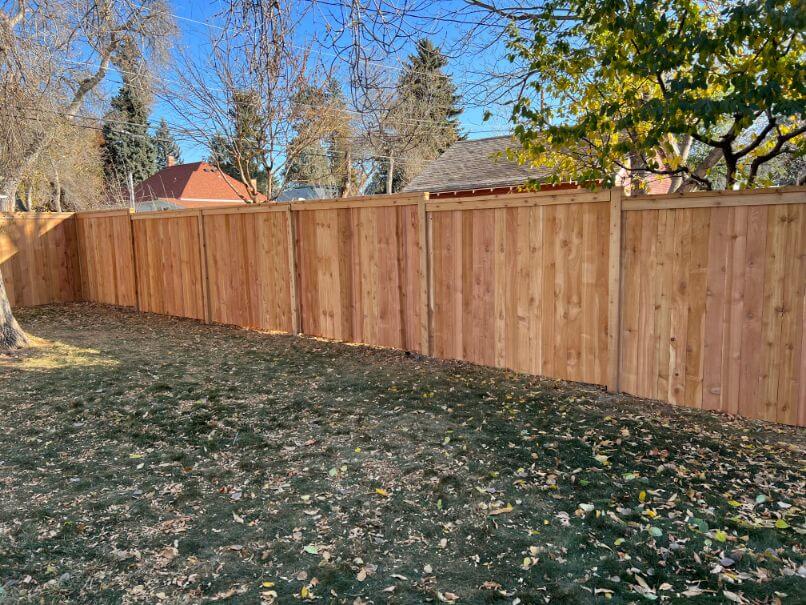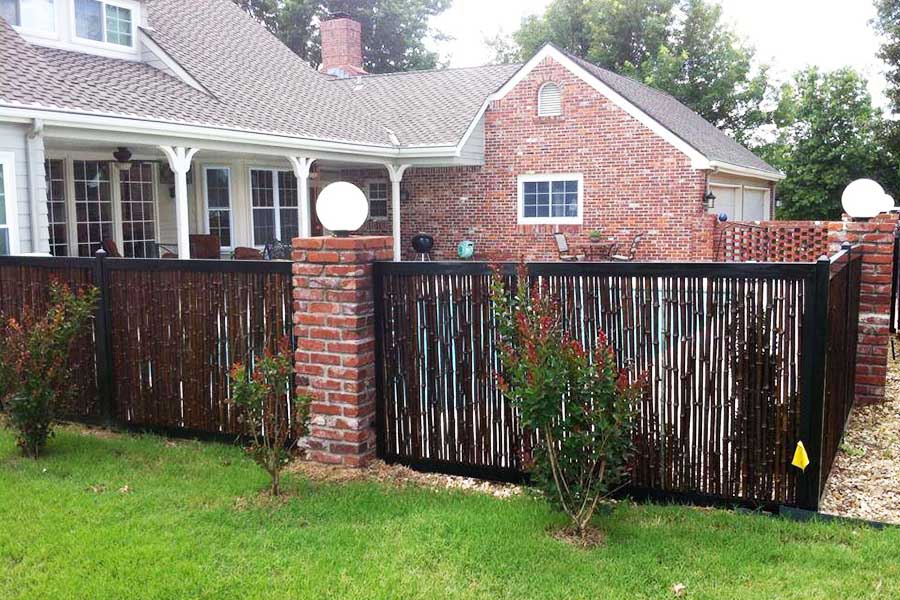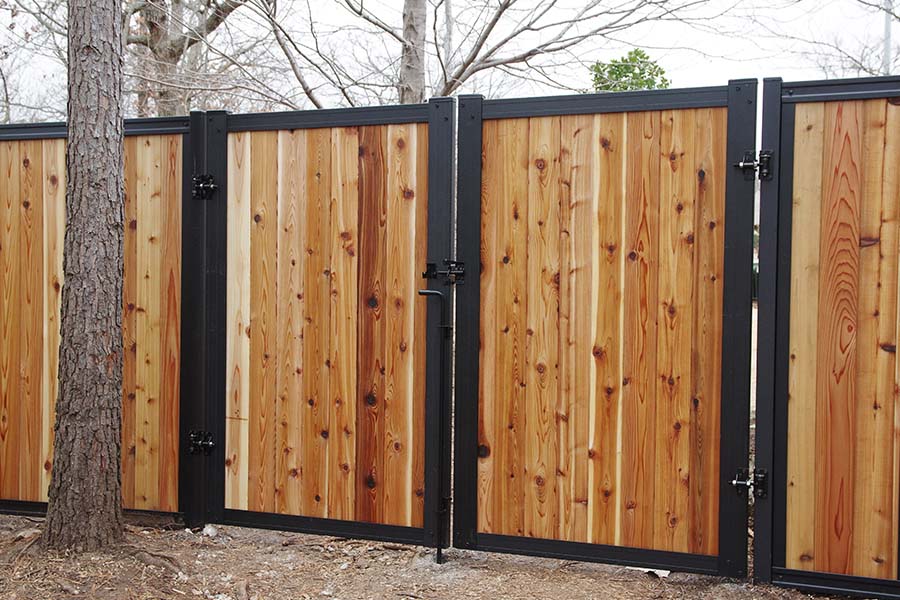Featured

Whether your fencing is made of timber, plastic, chain link, or metal, following a couple of simple maintenance techniques can make sure that it stays in exceptional problem for years to come. Below are some beneficial ideas to keep your fence looking fantastic and performing well.
- Execute Regular Evaluations. Frequently inspecting your fence is crucial to determining concerns prior to they come to be significant issues. Every few months, walk your home and examine the fencing for noticeable damage. Try To Find:
Absent or loose boards or panels: Whether it's timber, steel, or plastic, look for any type of loosened areas that may need to be reattached or changed. Corrosion or rust: Metal fencings, including chain web link or functioned iron, can create corrosion gradually. Early discovery permits you to clean and deal with the impacted areas prior to they spread out. Indicators of rot: Wood fencings are particularly prone to rot, specifically at the base of articles and slabs that are in call with the ground. Search for soft places, discoloration, or mold and mildew, which might show moisture damages. Stability of blog posts: Over time, fencing blog posts may become loose or unpredictable. This can lead to leaning sections or also collapse, so make sure that posts are securely anchored in the ground. 2. Tidy the Fencing On A Regular Basis. Cleansing your fencing is just one of the easiest and most effective ways to maintain its problem. Mildew, dirt, and particles can accumulate, triggering discoloration and wear over time. Below's how to clean various sorts of fencings:

Wooden Fencings: Make use of a stress washer or a scrub brush to remove dust and mold and mildew. Take care not to use way too much pressure with a power washer as it could damage the timber. If essential, utilize a timber cleaner or a moderate detergent to get rid of stains. Plastic Fences: Vinyl fencings are reasonably low maintenance and can be cleaned with soapy water and a soft towel. Prevent severe chemicals or unpleasant products, as they can damage the surface. Metal Fences: Aluminum or steel fences can be cleansed with a soft sponge and soapy water. For rust areas, make use of a wire brush or corrosion eliminator before using touch-up paint to stop the rust from dispersing. Chain Web Link Fences: Simply pipe down wire mesh fence to get rid of dirt and debris. If greenery has actually grown over the fencing, trim it back to avoid unnecessary stress on the structure. 3. Deal With Wooden Fences for Protection. Wooden fencings need added care due to their vulnerability to weather conditions. Dampness from moisture, snow, and rainfall can trigger wood to rot, warp, or swell. To protect your wood fence, consider the following:
Seal or Stain the Wood: Applying a protective sealer or stain will certainly help protect the timber and safeguard it from the aspects. This will additionally give the timber a fresh, polished appearance. Be certain to reapply the sealer every 2 to 3 years to keep its protective obstacle. Inspect for Termites: Wood fencings can be vulnerable to termite damage, specifically in damp areas. Keep an eye out for indications of infestation, such as tiny holes, timber dirt, or the presence of the bugs themselves. If you find termites, speak with a professional insect control solution to deal with the problem. 4. Trim Plants Around the Fence. If left uncontrolled, shrubs and plants expanding as well close to your fence can cause lasting damage. Overgrown roots can push versus fence articles, triggering them to loosen up, and vines can exert pressure on wooden or metal panels, potentially flexing or breaking them. Furthermore, plants growing too near the fence can hold moisture against the surface area, which can lead to rot or corrosion.

Make it a practice to trim any plants, vines, or shrubs that may be expanding near your fencing. This will not only maintain the fence far better condition however also enhance the overall aesthetics of your yard.
- Address Rust and Rust Immediately. For metal fencings, corrosion and rust can be a considerable issue otherwise addressed promptly. To avoid rust from spreading out:
Tidy and Sand Affected Locations: For minor corrosion areas, utilize a cable brush or sandpaper to eliminate the rust. After cleaning, apply a rust-resistant primer and paint to protect the steel from more corrosion. Usage Rust-Resistant Coatings: Think about using a rust-resistant covering to your steel fence to prolong its life-span. This can help avoid new rust areas from forming and maintain your fencing looking excellent. 6. Preserve and safeguard Fencing Articles. The stability of your fencing depends largely on the messages. The whole framework can become compromised if the blog posts are loose or harmed. Ensure to evaluate the posts regularly to check for indications of wear, leaning, or instability.
For Wood Blog posts: Wooden fence articles can rot at the base. It may be necessary to replace the blog post if you see signs of rot or decay. For Steel or Vinyl Posts: Ensure that steel or vinyl blog posts are securely anchored and not curved or busted. If needed, tighten loose screws or readjust the alignment of the messages to maintain the fencing standing tall. Verdict. Keeping your fence doesn't need to be a daunting task. With routine cleaning, examinations, and some fundamental care, your fencing can continue to be a appealing and useful feature on your residential property for lots of years. Whether you have a wood, vinyl, steel, or chain web link fence, adhering to these pointers will certainly help you obtain the most out of your investment while ensuring your fence remains in great condition, supplying the personal privacy and protection you need.
Latest Posts
Reach Out to Montclare Auto Repair Right Away - Top-Quality Service Awaits
Published Apr 20, 25
2 min read
Montclare Auto Repair: A Reliable Auto Service Provider in Montclare
Published Apr 20, 25
2 min read
A-Abel Roof Gallery: Workmanship in Every Information
Published Apr 20, 25
1 min read
More
Latest Posts
Reach Out to Montclare Auto Repair Right Away - Top-Quality Service Awaits
Published Apr 20, 25
2 min read
Montclare Auto Repair: A Reliable Auto Service Provider in Montclare
Published Apr 20, 25
2 min read
A-Abel Roof Gallery: Workmanship in Every Information
Published Apr 20, 25
1 min read